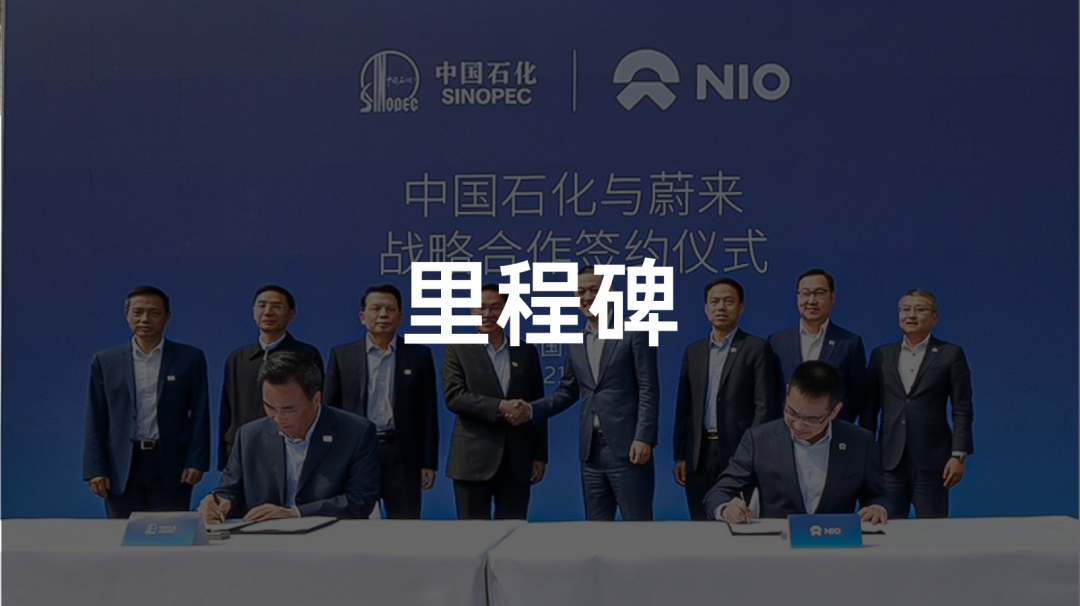On May 20th, 2018, NIO built its first battery swap station in the parking lot of the Global Digital Building, just one traffic light away from Tencent Building in Shenzhen.
As of May 28th, 2020, NIO has built a total of 131 battery swap stations, with a cumulative total of 500,000 swaps completed. This was achieved in 739 days, with an average of 676 station services per day and 28 services per hour.
On October 5th, 2020, NIO had built 155 battery swap stations, with a total of 1 million swaps completed. It took NIO only 130 days to complete the second 500,000 swaps with an average of 3,846 services per day and 160 services per hour.
In a recent achievement on March 24th, 2021, NIO reached a cumulative total of 2 million swaps in 190 days with an average of 5,263 services per day and 219 services per hour, supported by 193 swap stations.
Comparing the first period of 1 million swaps completion in 869 days, the second period of 1 million only took 190 days. During the second period, the number of swaps increased by 18.3% while daily services increased by 568%.
However, from 1 million to 2 million swaps, the number of swap stations increased by 24.5% while daily services only increased by 36.8%. This indicates the problem does not lie in the demand, but in the supply, as the dramatic increase in delivery data implies.“`
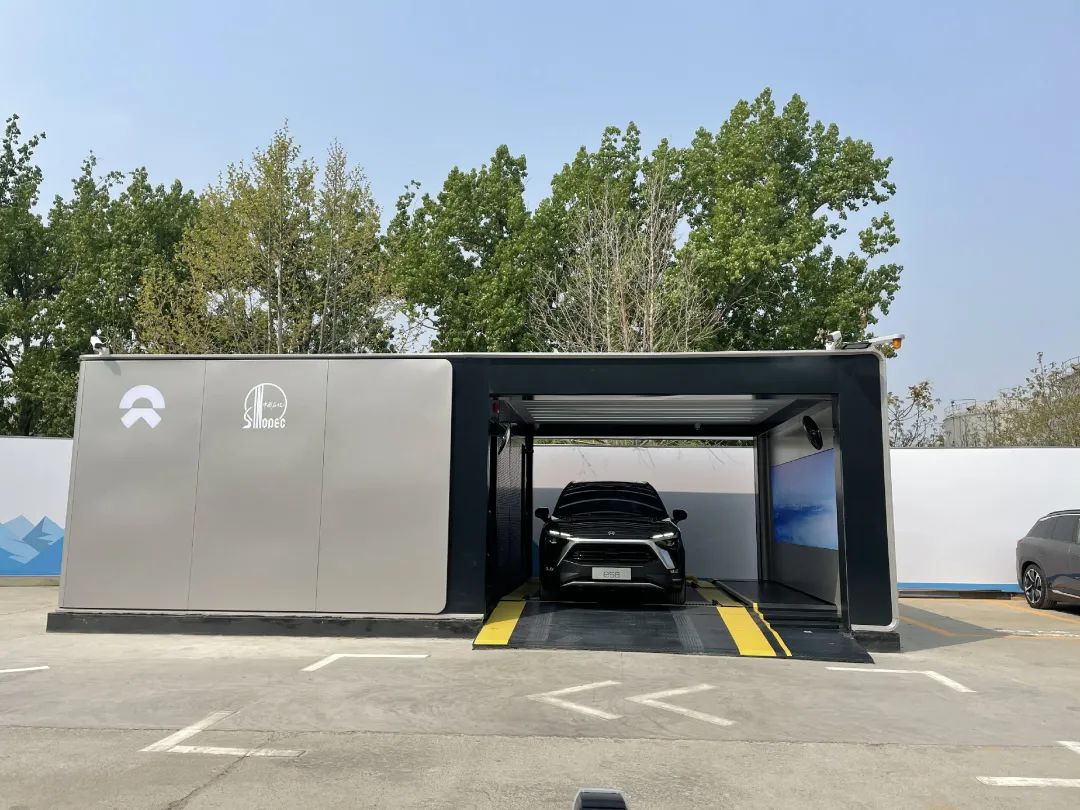
NIO’s first generation battery swap stations are approaching their “theoretical bottleneck” in daily service capacity. To expand this capacity, NIO has implemented policies such as adding two fast-charging stations, extending the operating hours of the swap stations, and promoting reverse swaps.
However, it is clear that NIO needs higher efficiency swap stations to meet its growing user demand.
Therefore, today, NIO officially launched its second generation battery swap station and signed a strategic cooperation agreement with Sinopec.
What is new in the second generation?
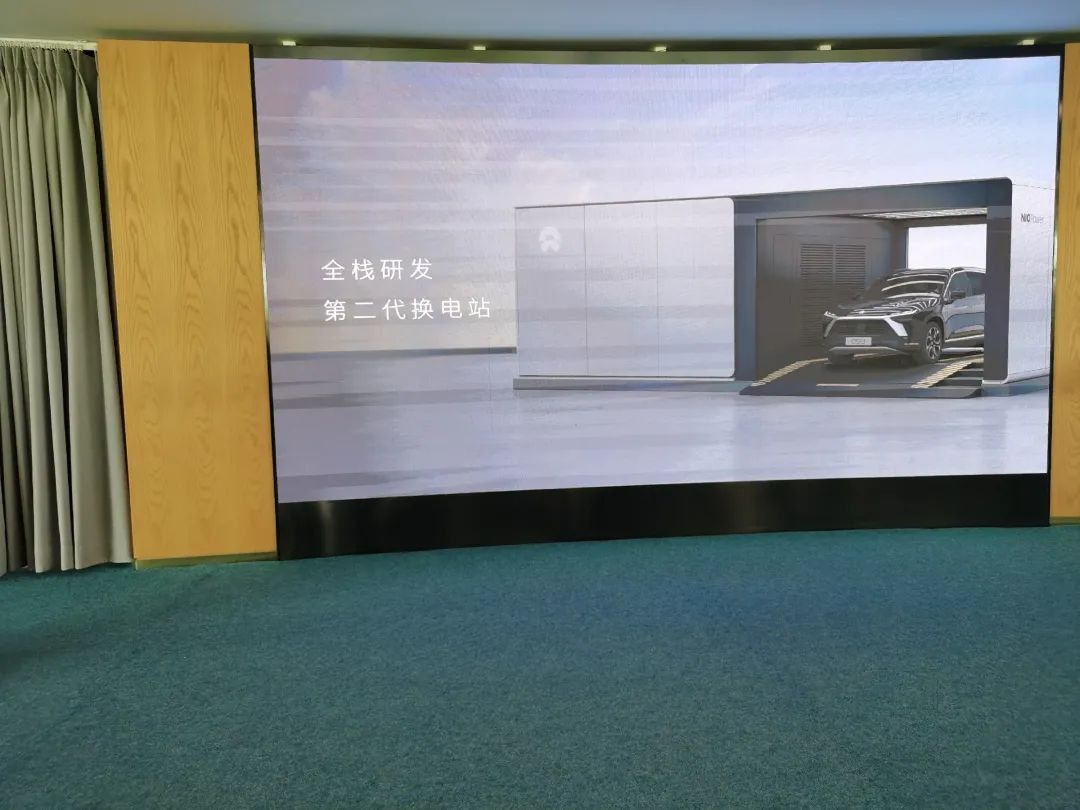
To briefly introduce the second generation battery swap station, NIO’s Vice President of Power Management, Shen Fei, stated that the development of the second generation station was mainly based on the customer’s desire to “stay in the car”. Initially, 7 battery packs were developed, but considering that users preferred more battery packs, 13 battery packs were used in the final design. In other words, what we see now as the second generation station is actually a product of multiple iterations within NIO.
In my opinion, it’s a good thing that the second generation station doesn’t have only 7 battery packs, as the problem of long queues for swapping would not have been effectively solved.
Due to the larger floor space of NIO’s second generation station, it can support up to 13 battery packs running simultaneously. The “90-degree rotation device” used in the first generation station to make the structure more compact is no longer used. A double-track electronic swap system is used instead, allowing empty battery packs and fully charged battery packs to be swapped simultaneously, thus speeding up the swap process.
According to the official statement, a single swap in the second generation station can be completed in about 5 minutes. Overall, the second generation station has a daily service capacity of 312 times, which is triple that of the optimized first generation.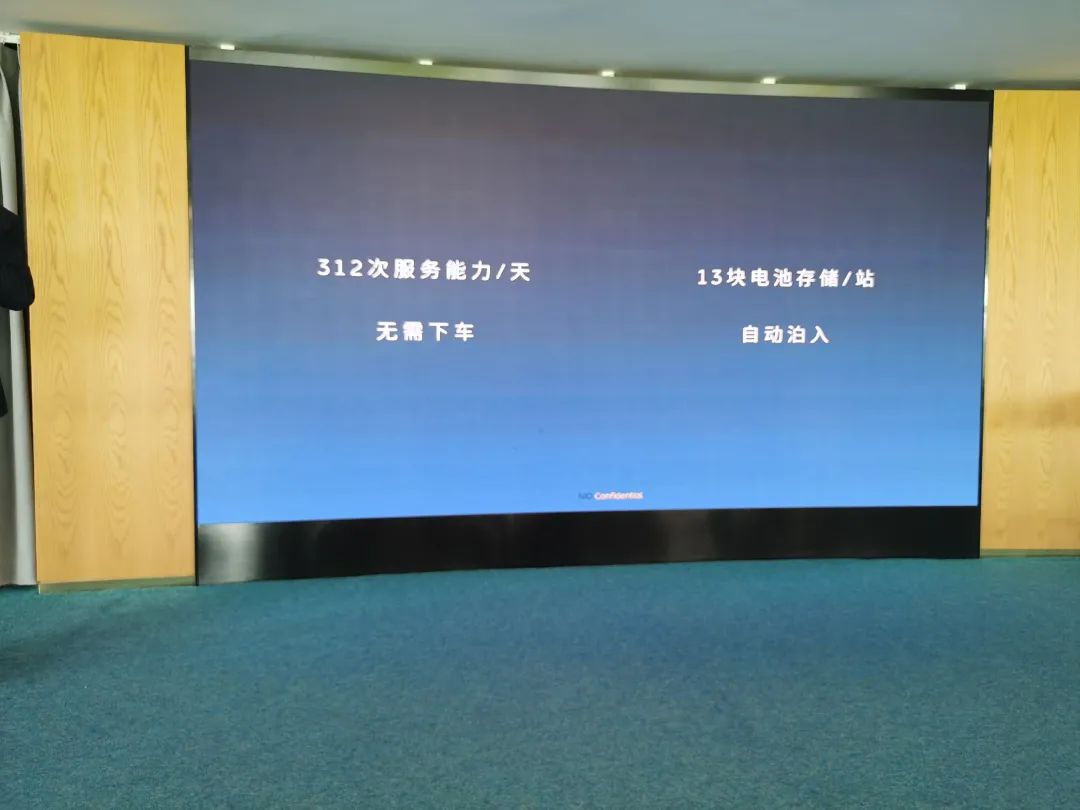
On the other hand, although the second-generation station can meet the “non-stop” function, due to everyone’s “reversing habits” being different, in order to ensure that the second-generation battery swapping station will not frequently have “public relations incidents”, NIO has arranged the function of “automatic parking”. The user can enter the parking area and start parking with one click. It is worth mentioning that NIO has built a high-precision map model in the battery swapping station on the basis of relying on single vehicle sensors in order to be redundant enough.
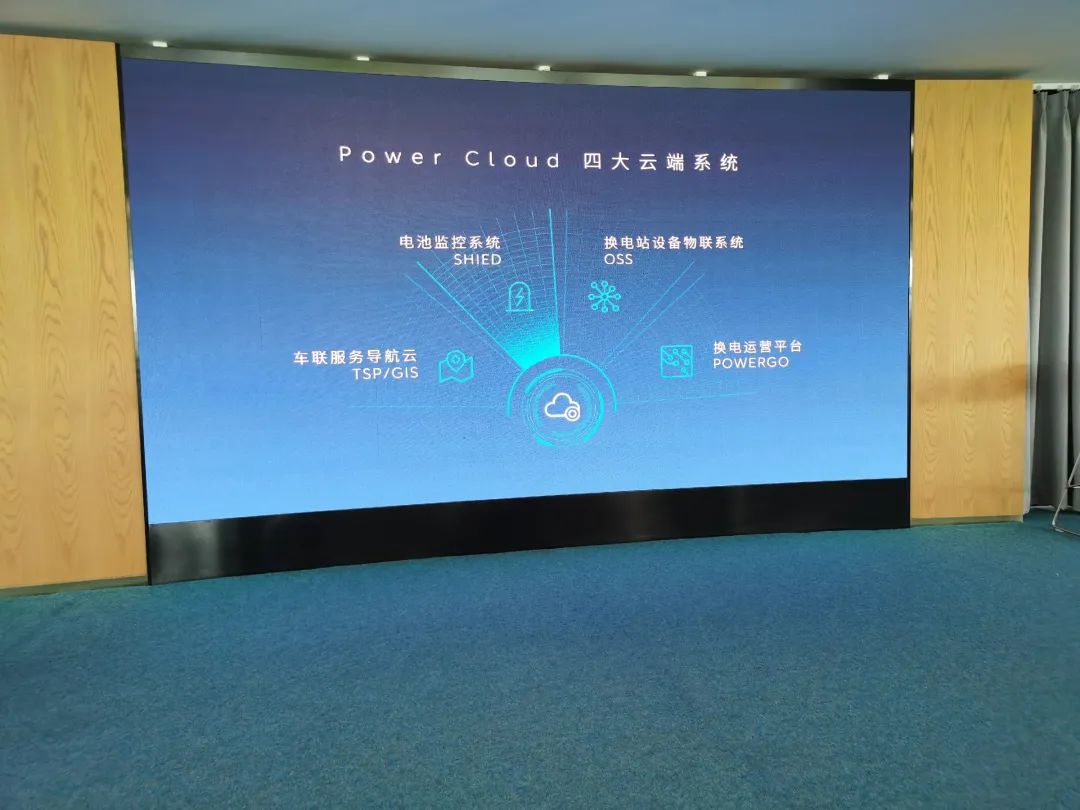
In addition, Shen Fei also mentioned that the second-generation station is equipped with 202 monitoring sensors and 37 AI camera monitoring sensors for safety purposes. The main goal is to know potential risks of malfunction as early as possible and repair them promptly. In addition, the 37 AI cameras are mainly used to construct a “biological barrier” to prevent some unexpected situations during the battery swapping process.
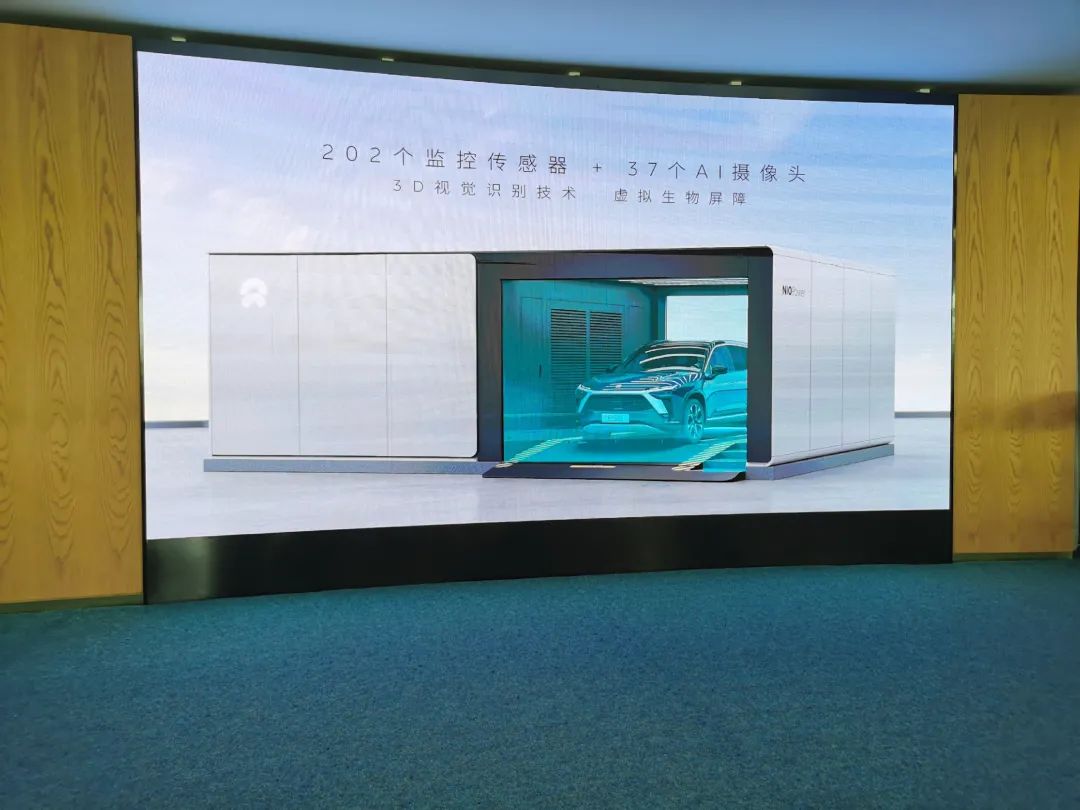
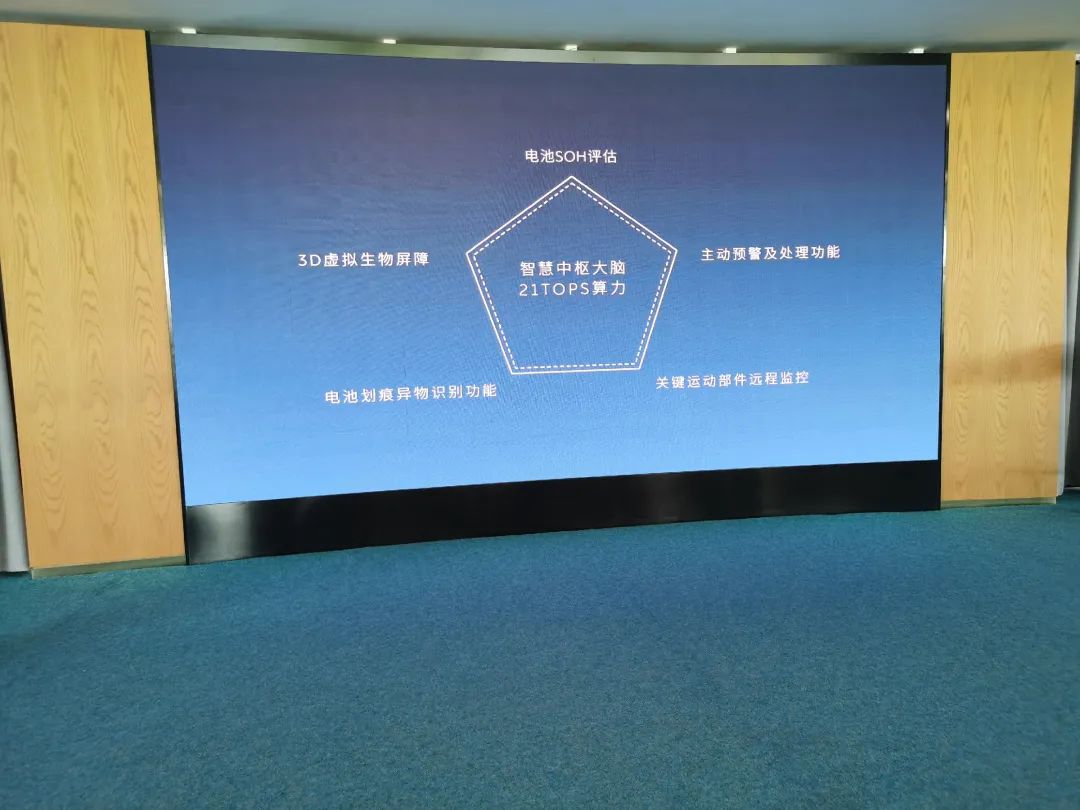
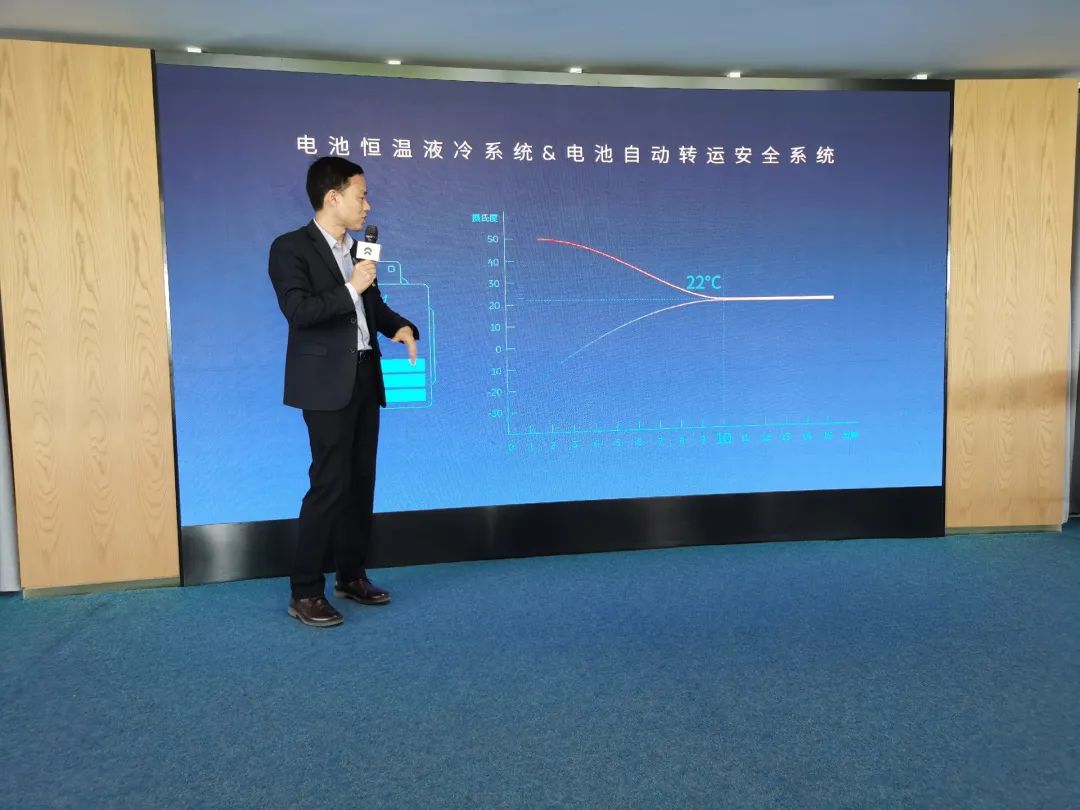
The battery swap station also supports FOTA upgrades. In the future, they will optimize the battery swapping process based on the data generated by actual battery swapping scenarios, with the hope of further shortening the swapping time. It is worth mentioning that NIO’s second-generation battery swap station has the ability of “reverse power supply”. However, due to cost reasons, NIO has only prepared one battery compartment, so it does not have the ability to supply power to the grid in reverse.
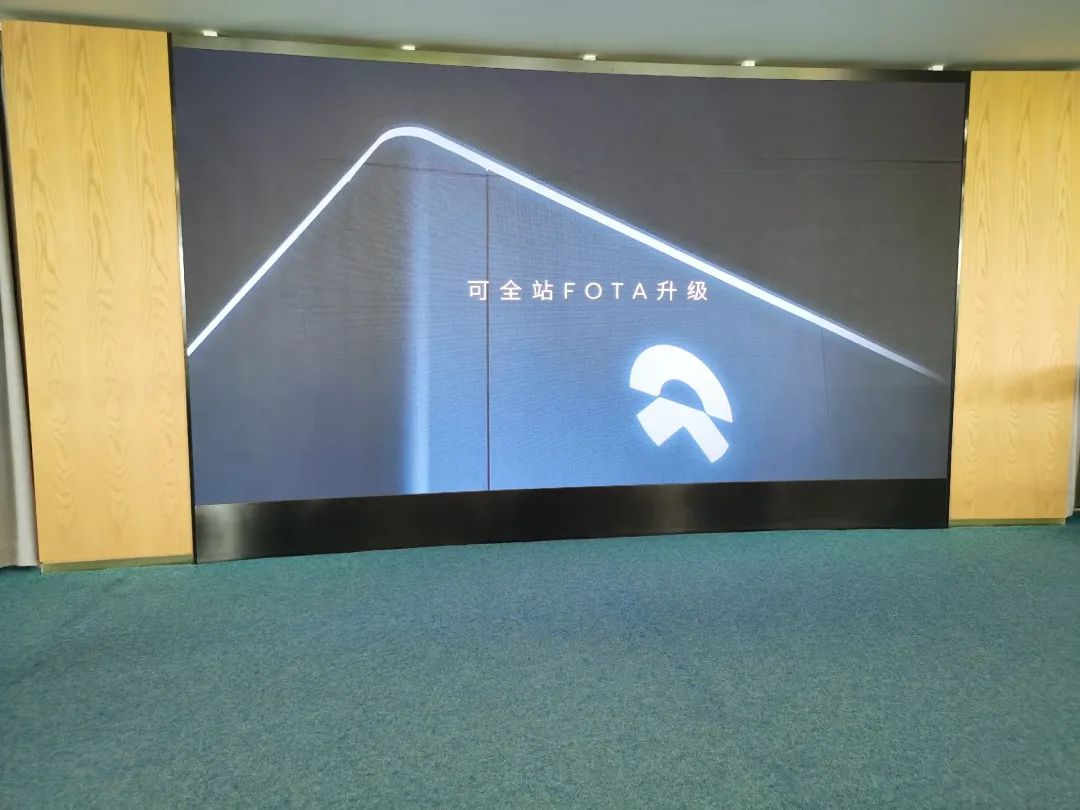
However, the significance of “reverse power supply” lies in the fact that when the power grid is down, the battery can continue to support the normal operation of the battery swap station. On this point, I believe those old car owners who have completed enough number of battery swaps can deeply feel it. After all, the feeling of the car being hung on the machine while people standing next to it, I have experienced twice in the past 100 times of battery swaps.
Surprisingly, the last page of the PPT mentioned something unexpected. NIO took the initiative to mention the flag set on January 9th at NIO Day to build 500 battery swap stations. Moreover, Li Bin also stated that if this task is not completed this year, he, Qin Lihong, and Shen Fei may have to look for new jobs.
This is the main content
Can we put a background image? Li Bin asked, and then the background became an image with the NIO logo. He always has high requirements for details, not just for suits and leather shoes.
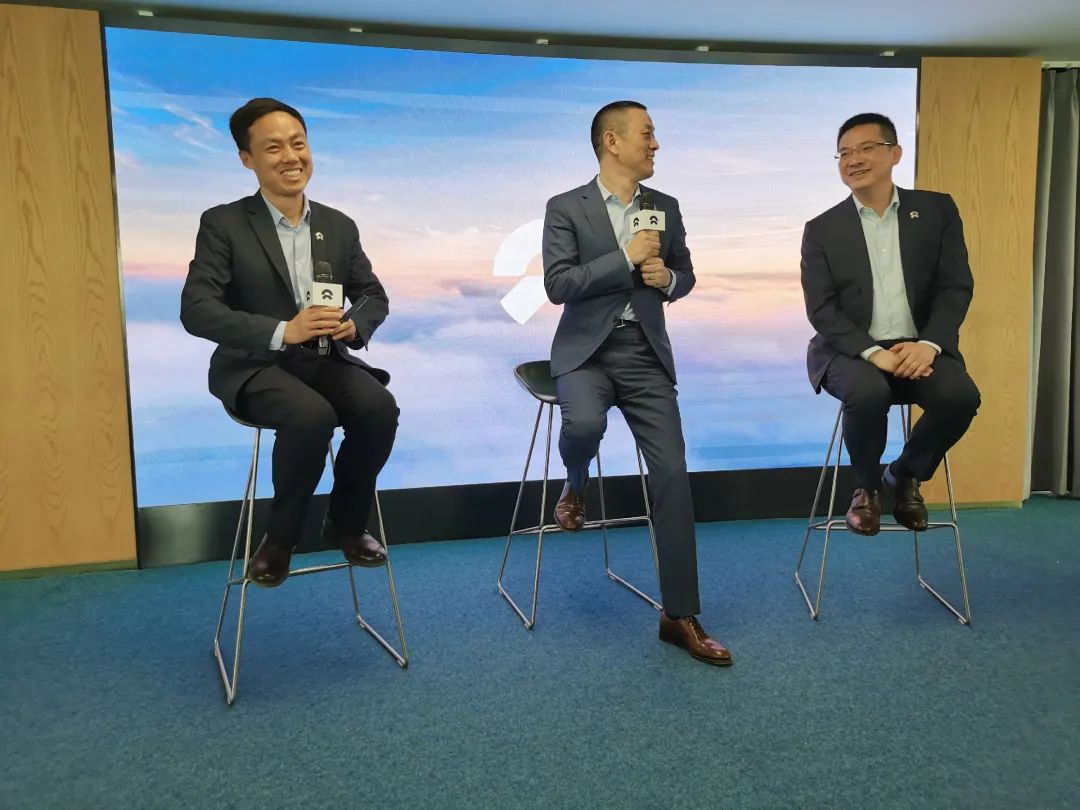
So what is the significance of the cooperation between NIO and Sinopec? The first and foremost is the gas station, which is a more prominent and convenient place for users compared to supermarkets, because users do not need to enter an office building parking lot and search everywhere.
On the other hand, NIO will deploy 299 battery swap stations in the next 260 days. Without the support of Sinopec’s sites, it will be a bigger challenge. This not only involves site selection, property communication, and other processes, but also can directly select locations with electric capacity of more than 900 kW from Sinopec’s 30,700 gas stations. After all, for the current charging pile companies, the electric capacity war is in progress.
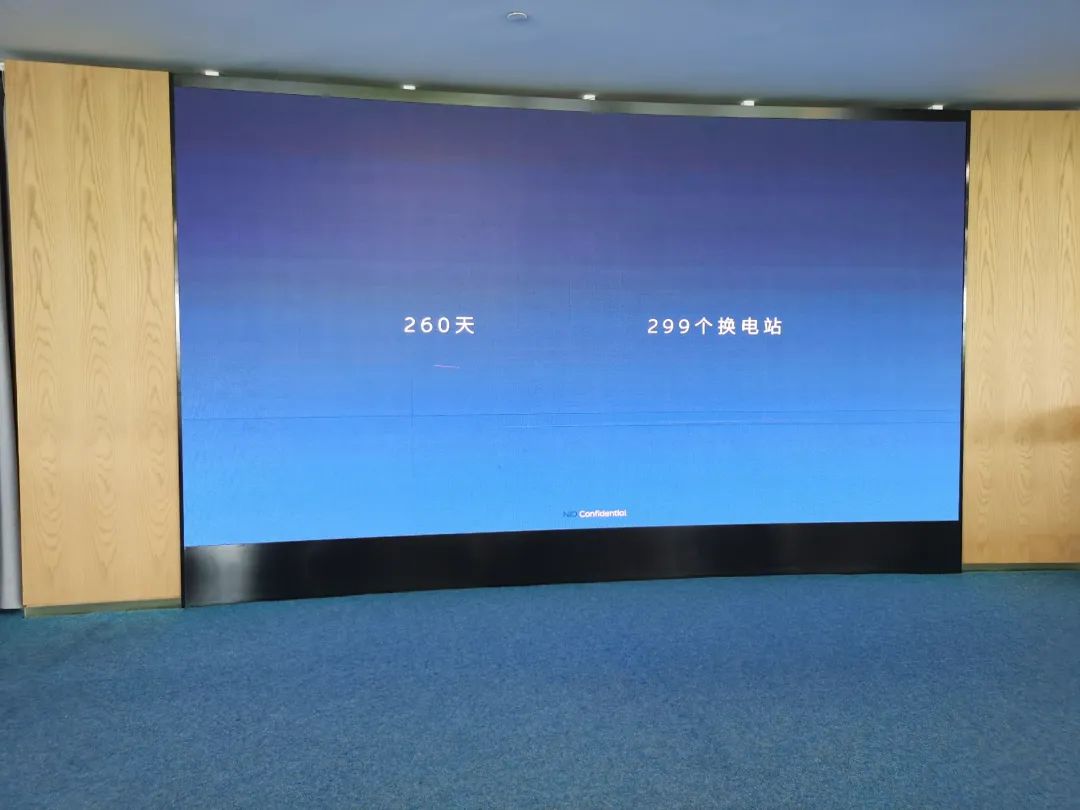 Compared with the first half of last year, NIO’s deployment strategy this year is more “scientific”, with three main directions mentioned by Shen Fei: increasing density for first- and second-tier cities, increasing coverage for central and western cities, and seeking service areas or highway entrances and exits with large user traffic for high-speed scenarios. Of course, the main reason behind this strategy is that NIO has a bit more money this year, but they still have to wait for suppliers to ramp up production capacity before they can deploy second-generation stations more quickly.
Compared with the first half of last year, NIO’s deployment strategy this year is more “scientific”, with three main directions mentioned by Shen Fei: increasing density for first- and second-tier cities, increasing coverage for central and western cities, and seeking service areas or highway entrances and exits with large user traffic for high-speed scenarios. Of course, the main reason behind this strategy is that NIO has a bit more money this year, but they still have to wait for suppliers to ramp up production capacity before they can deploy second-generation stations more quickly.
In addition, Li Bin also revealed a small piece of information. He mentioned that NIO’s battery exchange stations have always been open, and they are very willing to cooperate with other automakers if they are interested. In 2016 and 2017, two luxury brands were very serious about discussing the possibility of sharing NIO’s battery exchange stations, and this situation is not uncommon now.
However, the problem is that NIO has not yet seen any other brands willing to use their battery exchange stations, because this would require those brands to follow NIO’s battery pack standards when developing their own cars, which is not an easy decision for an automaker to make.
This answer raised another question. Some media asked how NIO views the issue of losses in the battery exchange station and service system.
NIO gave an answer that sounded a bit far-fetched, but upon closer inspection, it made some sense. The general idea is that after experiencing the “NIO moment” in 2019, NIO realized that providing a good user experience is very important. In other words, if it weren’t for the concerted efforts of old car owners in 2019 to save NIO, it might have become a negative example in the electric vehicle industry. Therefore, Qin Lihong said, “As long as we still have a breath, we will do this. If we don’t do this, we may run out of breath.”
They believe that the investment in battery swapping stations and service systems is actually an “investment” behavior. Moreover, from the current point of view, this investment behavior has actually driven the increase in NIO’s sales volume, thereby increasing NIO’s overall profitability.
Regarding the reason for the continued losses, Qin Lihong believes that this is mainly because the early investment was relatively large, but the scale effect of the NIO user base is not yet very large. Therefore, the scale effect of the service system has not yet formed, and the operating efficiency has not yet reached a reasonable value.
In fact, NIO has mentioned in public occasions more than once that their goal is to achieve a balance of profit and loss in their service system. However, in principle, NIO’s service system is similar to Didi’s. Looking at Didi’s example, there is still a long way for NIO’s service system to achieve a balance of profit and loss.
Finally, Li Bin also mentioned that “the issue of a company’s profitability should be discussed from the perspective of the entire company, not chopped up into countless pieces, making each piece profitable. I believe that there is no such good thing in the world.”
To be honest, Li Bin’s last sentence is actually very down-to-earth in the business world. It’s like Pfizer’s Lotensin blood pressure tablets, which are available at a loss or a very low profit in many larger pharmacies in order to attract traffic from high blood pressure patients, thus driving the sales of other drugs in the pharmacy and increasing overall profits.
Then, let’s talk about some topics that car owners are more concerned about. Due to technological iteration, the possibility of upgrading a first-generation battery swapping station to a second-generation station is relatively low. Of course, “site capacity” is also a major factor in this, as many first-generation stations, apart from parking spaces, have an upper limit on site capacity that is sufficient for many first-generation stations to continue to maintain their status quo.
Another topic is that in the current generation of NIO vehicles, because the screen consumes less power during battery swapping, it can be continued to be used, while the air conditioner which consumes more power cannot be continued to be used. But Shen Fei said that they can do more to further compress the time required for the battery swapping process and make the temperature difference between the interior and exterior of the car smaller.
Let’s talk about the future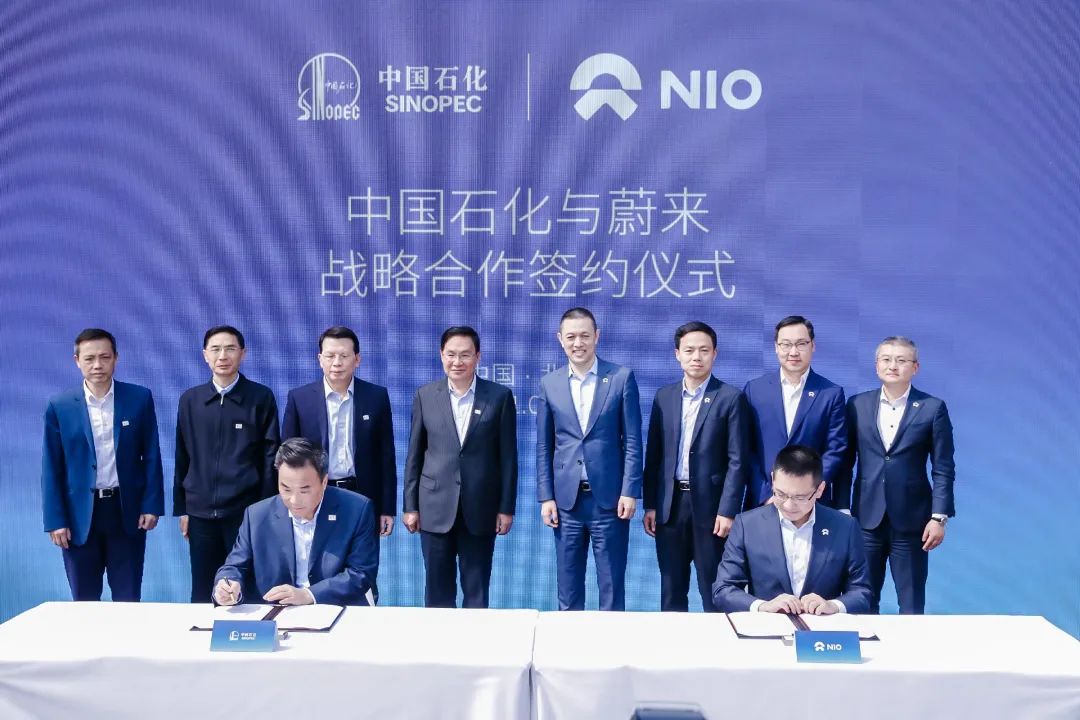
When I first heard about the cooperation between NIO and Sinopec, it was on March 2nd. My first impression was just as Li Bin mentioned today: “NIO has found a sugar daddy?”
According to the “Oil Intelligence Weekly” in the United States, in 2020, Sinopec ranked first in the world with an annual refining volume of 295.9 million tons and ranked fourth in global sales volume of 262 million tons of products, surpassing Total of last year and just behind the three major international oil companies Shell, BP, and ExxonMobil.
Last year, NIO’s delivery volume was 43,728. To be frank, Sinopec reserved such a large land area and provided such a large capacity to such a small electric vehicle company to build exclusive battery swapping stations. From the surface, this is not called cooperation in the business society, but “doing charity”.
Regarding this issue, since Sinopec’s relevant person in charge was not interviewed, NIO provided Sinopec’s thinking.
We won’t discuss the consensus that electric vehicles are a trend in the industry. On this basis, on the one hand, in oil and energy companies in Europe and America, the proportion of non-oil business income and profits is higher than that of domestic enterprises.
Therefore, for Sinopec, they also need to develop part of the non-oil business, and the first thing is to develop electric power, hydrogen power, and natural gas.
If combined with the sales ratio of electric vehicles in the passenger car market in 2020, which is about 5%, and this data has recently increased to almost 10% in March this year. Shanghai is even more aggressive, with the sales ratio of electric vehicles reaching nearly 30% in March, so based on this data, we can understand why Sinopec chose to develop electric power business.
In addition, non-energy businesses are urgently needed for gas stations. Because there is a natural intersection between gas stations and fuel vehicle users, how to make good use of this fragmented time has always been a difficult problem for oil companies to break through.
Currently, corresponding methods include, in addition to self-service car washing and fuel treasure, Sinopec’s easily accessible convenience store, which ranks first in the number of stores under Sinopec in China, reached 27,699 in July last year.
For gas stations, if they cannot provide electric power services, it means that they will lose all the flow of electric vehicle owners. This is also a scary phenomenon for an Internet company. Your users are quietly flowing away.But why did Sinopec choose NIO swap stations instead of installing Superchargers?
In my opinion, we need to start with traffic flow. Combining the fact that the second-generation stations have the capacity to provide 312 services per day, even if only half of them are used, i.e. 150 times a day.
For Sinopec, which invests the same “four parking spaces” resources, choosing Superchargers means less traffic flow. After all, a charging station needs to serve about 38 electric vehicles a day, which translates into long queues for most of the day. This situation is common in highway service areas, but not in cities.
However, I still think that combining these factors logically is not “sufficient”. Here, let me speculate boldly. Is the fact that other car companies share swap stations, as mentioned earlier, really progressing?
Another thing I want to talk to you about is the last piece of NIO’s commercial layout, which is the “battery gradient utilization” that Qin Lihong mentioned before, because the value of recycling for batteries is still quite high.
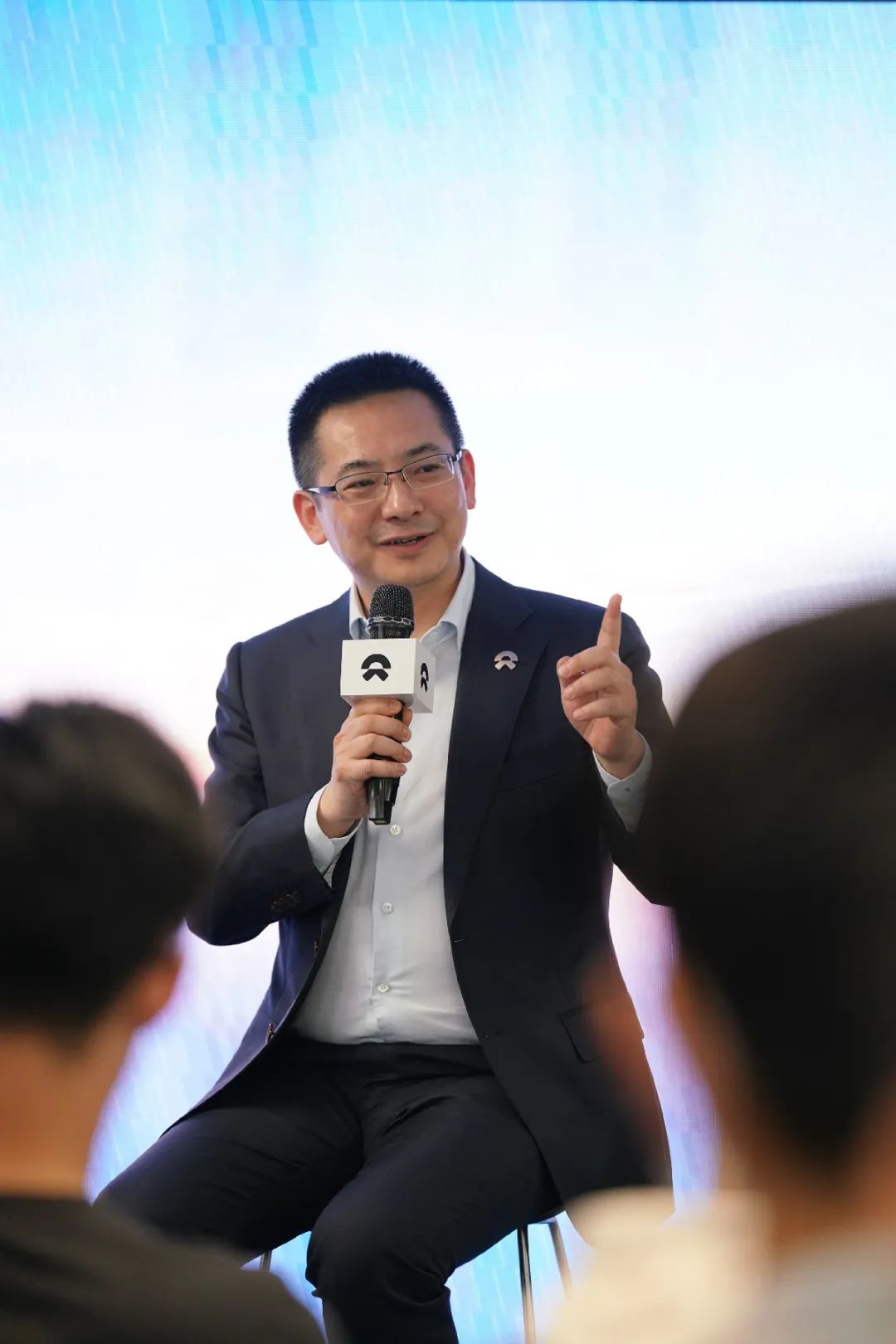
As NIO specializes in swap stations, the uniform battery pack specifications do limit the “imagination” of vehicle model development. But for battery gradient utilization, the uniform specification enables higher recycling efficiency and lower recycling costs.
Furthermore, due to vehicle-electric separation and BaaS, NIO also has the conditions for not scrapping the whole vehicle and separately scrapping the battery pack. In my opinion, the more important reason is the swap station system, which means that NIO itself bears the cost of battery loss, forcing NIO to invest more in this matter.
Conclusion
For the electric vehicle industry, incorporating energy supplementation systems into gas stations is a milestone event. For NIO, the large-scale operation of second-generation stations can greatly alleviate the phenomenon of user queueing for battery swap, and the use of “automatic parking” indicates a posture to enter the European market.
As for the details of NIO’s European market, we have reported it before. Currently, the NIO house in Oslo, Norway is already under renovation. According to the recruitment information, besides the road service specialist, NIO will transfer the entire operations system from China to Europe.Therefore, after the media meeting, I asked NIO’s CEO Qin Lihong about the specific plans for the European market. Qin Lihong stated that due to the COVID-19 situation in Europe earlier this year and the busy domestic work, NIO will provide a more systematic introduction to us about the ideas for the European market on a certain day in Q2.
This article is a translation by ChatGPT of a Chinese report from 42HOW. If you have any questions about it, please email bd@42how.com.
